|
|
Toronto Website Design & Toronto SEO
Kara Walker:
Narratives of a Negress

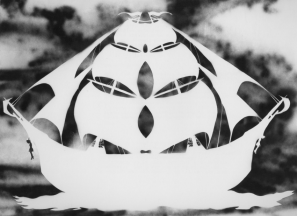 Kara Walker: Narratives of a Negress edited by Ian Berry, Darby English, Vivian Patterson, and Mark Reinhardt. Cambridge, MA: MIT Press, 2003, 205 pp., $45.00 hardcover.
Kara Walker: Narratives of a Negress edited by Ian Berry, Darby English, Vivian Patterson, and Mark Reinhardt. Cambridge, MA: MIT Press, 2003, 205 pp., $45.00 hardcover.
Reviewed by Johanna Branson.
BORN IN 1969, KARA WALKER is by all accounts one of the most talented, accomplished, and controversial artists of her generation. She burst on the scene fresh out of graduate school in 1994, in an exhibition at The Drawing Center in New York City which included Gone, An Historical Romance of a Civil War as It Occurred Between the Dusky Thighs of One Young Negress and Her Heart. As the title indicates, from the get-go Walker was fully engaged with an ambitious program. One long white wall held a series of life-sized black paper silhouettes, which she seemed to have cut from our nation's collective image bank. Hoop skirts, Spanish moss, twisted braids, "birthin' babies,"-- the figures dance and float their way down the wall, embodying and enacting exchanges of power between characters drawn from historical romance, sexual fantasy, and the parlor games, theatrical melodramas and dioramas of 19th century popular culture. It was a dazzling tour de force of visualization, at once elegant, hilarious, and extremely painful.
In the nine years since, Walker has followed up on the promise of her early ambition, extending in many ways the material set forth in Gone. She has been very productive; she has exhibited many series of drawings and watercolors, made a pop-up book, and filled room after room of the world's major galleries and museums with tableaux of her silhouettes. She has had remarkable success, in terms of opportunities to exhibit, attention from the press, and major awards conferred. She has also weathered serious controversy; in an act of attempted infanticide unusual in women's art, some older artists were so offended, angered, and hurt by her images that in 1997 they mounted a letter-writing campaign against her work, hoping to prevent it from reaching a public.
After taking some time out to collect herself, Walker came back from this attack feistier than ever. A recent exhibition and its important accompanying catalogue, both titled Kara Walker: Narratives of a Negress, provide us with an opportunity to step back from this tumultuous young career, to reflect on what Walker, just now reaching full maturity, has accomplished in the first decade of her life as an exhibiting artist. The project as a whole shares a remarkable unity of purpose. It is clear that the design of the book was of a piece with the staging of the exhibition--the curators were also two of the four editors--and many decisions were made to keep Kara Walker's art and voice as strong as possible.
There is much indeed to say about the exhibition, most of it beyond the task of this essay. Perhaps it is enough here to acknowledge that the installation of the work was straightforward in terms of the clear access it provided to Walker's art. This is unusual; in an effort to alert viewers to controversial work, galleries often use various techniques, including wall texts and the construction of special routes viewers must follow to enter the exhibition. Either practice places a buffer between controversial work and the viewer. Either practice can also, conveniently for the gallery, place distance between the exhibiting institution and the artist, in effect serving as a disclaimer. This shapes the message of an artist, sometimes nearly to the point of censorship. Neither of these things happened in this installation. There was one sign at the entrance notifying the parents of young children of the content of the images; the two main galleries holding the show were openly arranged, with clear lines of sight permitting comparison between earlier and more recent work, work in different media, and work on different scales.
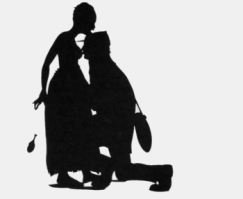 The complex, multi-authored catalogue reveals strong editorial vision partnered with enlightened design of the book as a physical object. Perhaps more than any other task facing a designer, a book about a visual artist is a tough challenge. It takes great skill, which must be invisible--the designer's presentation of another person's visual material does well not to compete with it stylistically. The task is even more difficult with the subset of artists' books that are exhibition catalogues, where the artist's choices concerning the staging of her material are the part of the subject; the designer's own decisions concerning format and presentation must be especially thoughtful, or they run the risk of obscuring the artist's message altogether. In typography, the phrase often used is "crystal goblet," that is, a perfect transparency, where the content is all you see.
The complex, multi-authored catalogue reveals strong editorial vision partnered with enlightened design of the book as a physical object. Perhaps more than any other task facing a designer, a book about a visual artist is a tough challenge. It takes great skill, which must be invisible--the designer's presentation of another person's visual material does well not to compete with it stylistically. The task is even more difficult with the subset of artists' books that are exhibition catalogues, where the artist's choices concerning the staging of her material are the part of the subject; the designer's own decisions concerning format and presentation must be especially thoughtful, or they run the risk of obscuring the artist's message altogether. In typography, the phrase often used is "crystal goblet," that is, a perfect transparency, where the content is all you see.
Narratives of a Negress poses a still greater challenge, due to the many kinds of work being presented--there are index cards (more about them shortly); drawings; watercolors; photographs of silhouette installations; and even a book within the book (the pop-up book mentioned above). In addition to changing media, Walker's images are all changing form internally, as they are morphing embodiments, bits of evidence from visual archives from all levels of culture. Within each artwork, there is an ongoing visual turbulence, with constant exchanges of power being represented. It would be easy to imagine design that insisted on adding its own visual information, which would have had the effect of tipping the whole endeavor towards overabundance, creating visual white noise. The large, heavy book could have seemed pretentious or even arrogant.
Happily, this does not happen. The book is saved by restraint; the cover and the basic design scheme is black and white, and the weight comes honestly, as it were, from the quality of the paper stock. The color photography, even of black and white art, is excellent; the texture of the materials comes across. The layout is elegant, beautifully functional. As you look through the images and read the texts, all the reference information you need is at hand, on each page. The only flipping you do is to locate different bodies of work, and this serves the function of keeping the art constantly in front of your eyes.
SPEAKING FOR THE TEAM that steered the project, editor Ian Berry said they saw the exhibition and the catalogue as two components of the same project, one providing a vivid experience in a specific time and place, the other having a long afterlife and reaching a much broader audience. The catalogue not only documents the exhibition but also presents additional information to the reader about the artist and her work. Reference information is included, from reproductions of many works of art not in the actual exhibition, to an exhibition history, to a bibliography. Reflection on the work is provided in essays by four critics and scholars, each of whom approached the subject from a different professional background. This is a real strength of Narratives of a Negress; it is hard to imagine sufficient illumination concerning Walker's work coming from any one direction. One thing all four do share, however, is a reference to her critics; the controversy forms a subtext of the book. The reader senses a will to put it aside, if not behind, to "set aside the yoke of always having to address it," in Ian Berry's words.
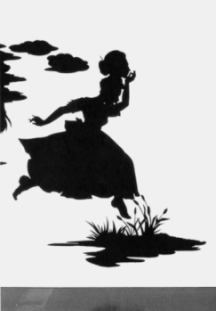 In "Kara Walker: 'The Black-White Relation,'" Anne Wagner provides the thorough, intelligent, articulate framing of art historical context we have come to expect from her, focusing on race in representation. She begins her essay with an account of the controversy the work has provoked, and then dips into the origins of Walker's images in popular culture, including the strategies of minstrelsy and the history of the cut-paper silhouette. She offers an illuminating comparison with Byron Kim, an artist who takes a multicultural approach to looking at skin color, as if we lived in a post-black/white culture. Wagner finds this position wanting, insisting that, to paraphrase her, the play of difference still dances hectically along a single black/white axis. She continues by comparing Walker to Frantz Fanon, the model of an engaged narrator, "hardly exempt from the very pathologies he aims to diagnose and cure." Wagner is eloquent in her posing of the central questions of Walker's work-- whose fantasy controls? what are the uses of melodrama?--and sees as one of Walker's greatest strengths the conspiracy between the artist and the viewer in the telling of a history of race.
In "Kara Walker: 'The Black-White Relation,'" Anne Wagner provides the thorough, intelligent, articulate framing of art historical context we have come to expect from her, focusing on race in representation. She begins her essay with an account of the controversy the work has provoked, and then dips into the origins of Walker's images in popular culture, including the strategies of minstrelsy and the history of the cut-paper silhouette. She offers an illuminating comparison with Byron Kim, an artist who takes a multicultural approach to looking at skin color, as if we lived in a post-black/white culture. Wagner finds this position wanting, insisting that, to paraphrase her, the play of difference still dances hectically along a single black/white axis. She continues by comparing Walker to Frantz Fanon, the model of an engaged narrator, "hardly exempt from the very pathologies he aims to diagnose and cure." Wagner is eloquent in her posing of the central questions of Walker's work-- whose fantasy controls? what are the uses of melodrama?--and sees as one of Walker's greatest strengths the conspiracy between the artist and the viewer in the telling of a history of race.
Mark Reinhardt provides the fresh look of a political scientist, writing with great sensitivity about the images themselves as well as their contexts and uses. His essay, "The Art of Racial Profiling," uses as points of reference our everyday experience, non-expert, outside any art gallery--for instance, the pickle the police are in when they gather racial profiling information to prove they don't use racial profiling; or the prevalence of the novel and film versions of Gone With the Wind as the primary vehicles of popular impressions of the history of the Civil War. He never underestimates the power of such practices to shape our thinking and beliefs, both conscious and unconscious, regarding race and is clearly engaged by Walker's powerful use of them. He describes the consistent duality of her work, at once elegant and vulgar, clear and obscure, grim and funny, and the way it engages us in reflecting on our relation to the seductions of popular culture. Reinhardt is very acute on the humor in her work, discussing the unheimlich, or the making strange of our own home, our own history. He takes up the controversy surrounding her work, with a sharp analysis of her goals and of the often used but not often unpacked word "stereotype," insisting that a stereotype is a field of struggle, neither inherently positive or negative, but dependent for its meaning on the uses to which it is put. Reinhardt compares her work to two other major presentations of racism and stereotyping: first, the unquestioned, hidden fascination--he uses the word pornography--of early abolitionist accounts of slavery; and second, the work of philosopher-artist Adrian Piper. Both of these exist as a pretext for correcting the wrongs of racism. Reinhardt points out that Walker's vision is grimmer, finally. Her images are buried deeper in imagination and fantasy. He concludes: "She does not give us a world of redemption in suffering and virtue in victimhood… in taking up old fantasies and familiar idioms, she has found a new way of picturing the politics of race."
Darby English's extended essay, "This is not about the Past: Silhouettes in the Work of Kara Walker," reveals admirable depth and breadth of reference. He sees as central in her work her reformation of history, her freeing of the self to "do the work of mining history's unarticulated passages, art's unmade objects, and the value of counter-memory itself." Like the other essayists, he examines the controversy surrounding her work as well as her response to it in a remarkable work of 1998, Cut. In this analysis, as well as in subsequent examinations of her pop-up book, Freedom: A Fable by Kara Elizabeth Walker--A Curious Interpretation of Wit in a Negress in Troubled Times with Illustrations, and of the Klein Group-type, perceptually oscillating silhouette Untitled (1995), English shows remarkable insight into the history of silhouettes and racism. He offers a stirring defense of Walker's project of counter-memory. It is also the case that the only lapse of editorial rigor in the catalogue comes with his piece, which has the congested tone of a writer who has more ideas than he knows what to do with and would appreciate the challenge of strong editing. And the only mean-spirited note of the book occurs in his piece, where he refers to another scholar's writing about Kara Walker as "pop psychology," a needless potshot in a volume that otherwise maintains a near courtly tone about difficult subject matter.
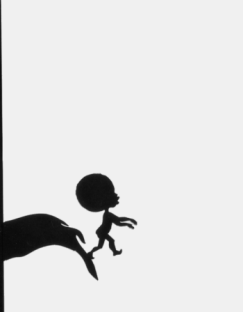 "The Enigma of the Negress Kara Walker," by Michele Wallace, is an example of tough-minded, opinionated writing that has a sure, on-the-ground voice. It disarms the reader with the depth of sympathy it creates for the young artist. Unflinching in its defense of the individual voice, Wallace's essay remarks on the lack of support the individual can have in any collective of people who have experienced the same attacks, the same harm: There is only safety together, no one else can know our experience. Wallace points out that Walker works outside that circle of safety. She also offers a kind of reassurance to Walker's critics that they have underestimated their own strength; she argues that beauty has helped African Americans survive. Others disappeared and are disappearing off the face of the earth, but African Americans, with constructions of beauty just like Walker's, have survived. It is a ringing defense, and she is the last writer whose work appears in the catalogue.
"The Enigma of the Negress Kara Walker," by Michele Wallace, is an example of tough-minded, opinionated writing that has a sure, on-the-ground voice. It disarms the reader with the depth of sympathy it creates for the young artist. Unflinching in its defense of the individual voice, Wallace's essay remarks on the lack of support the individual can have in any collective of people who have experienced the same attacks, the same harm: There is only safety together, no one else can know our experience. Wallace points out that Walker works outside that circle of safety. She also offers a kind of reassurance to Walker's critics that they have underestimated their own strength; she argues that beauty has helped African Americans survive. Others disappeared and are disappearing off the face of the earth, but African Americans, with constructions of beauty just like Walker's, have survived. It is a ringing defense, and she is the last writer whose work appears in the catalogue.
Or, more accurately, the last writer to appear who isn't Kara Walker. Editor Ian Berry explained that he believes the production of catalogues of the work of living artists should be collaborations. Since Walker did not want to write an essay, and since she had already given many interviews, they had the notion of making a kind of book within the catalogue, through the sequencing of the information and the inclusion of a different kind of writing from Walker herself.
Thus, the voice that comes across most clearly in the catalogue is Walker's. The table of contents doesn't even appear until page 87; all the pages before are reproductions of Walker's work and pieces of her writing, with the result that her voice sets the tone. Her voice begins and continues throughout the volume in the form of index cards, which appear to be Walker's personal note-keeping system. Edited by Berry from a large pile the artist gave him to work with, the cards are reproduced nearly as a trompe l'oeil; typed by Walker on white stock, they look like they have been laid out, slightly dog-eared, somewhat marked up and edited, on the white pages of the book, giving them a sense of informal immediacy. They encompass a wide range of material, from quotations from her reading, to flights of fiction, to character sketches, to rants. The first two, opening the book, bear transcribing in as close as possible to Walker's original (typos included):
(1)
"and now, dear reader, I come to a period in my unhappy life, which I would gladly forget if I could. The remembrance fills me with sorrow and shame. It pains me to tell you of it; but I have promised to tell you the truth, and I will do it honestly, let it cost me what it may. I will not try to screen myself behind the compulsion from a master; for it was not so. Neither can I plea ignorance or thoughtlessness. For years, my master had done his utmost to pollute my mind with foul images, and to destroy the pure principles inculcated by my grandmother, and the good mistress of my childhood.
(2)
"The influences of slavery had had the same effect on me that they had on other young girls; they had made me prematurely knowind, concerning the evil ways of the world. I knew what I did, and I did it with deliberate calculation"
"Linda brent"
harriet Jacobs
Incidents…
This is the equivalent of throwing down the gauntlet to her critics. It tells the reader that Walker insists that she, and they, and we, share more rather than less. Instead of being innocent, powerless victims, she sees her figures as actors, as players. In a conference held in conjunction with the exhibition, scholar Hamza Walker told Kara Walker she is a post-civil rights, post-Roots artist. He said that she is an heiress of decades of representations, and that she has made the very act of using these representations an act of unflinching honesty, of searching through multiple truths, an act of agency in historical interpretation and current ethical living.
The very last image of the book is a cut black paper cloudscape taken from a larger installation. "The End" is written on the central cloud, and it is a lovely visual joke. On the opposite page, however, is another of the note cards, firing its own final salvo:
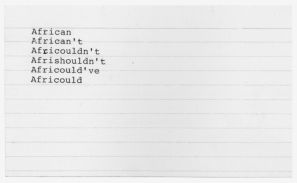
No more pretty shadows,
papercuts
or delicate things,
that's so 90's
No more Irony
no more mercy
it is high time
for anger,
which precedes chaos,
but which is hard to create, when there's money in the bank, and a healthy economy.
List of Art Pieces:
Untitled, 2000, mixed media on paper, 55 x 71-1/2".
Before the Battle (Chickin' Dumplin'), 1995, cut paper on canvas, 48 x 54".
Presenting Negro Scenes Drawn Upon My Passage Through the South and Reconfigured for the Benefit of Enlightened Audiences Wherever Such May Be Found, by Myself, Missus K.E.B. Walker, Colored, 1997 (detail),cut paper and adhesive on wall, 12 x 155 feet overall.
One of the pages of Freedom: A fable by Kara Elizabeth Walker-A Curious Interpretation of the Wit of a Negress in Troubled Times with Illustrations, 1997, hardbound artist book, pop-up design by David Eisen, 9-1/4 x 8-1/4".
One of Kara Walker's index cards.
|
|
|
|





